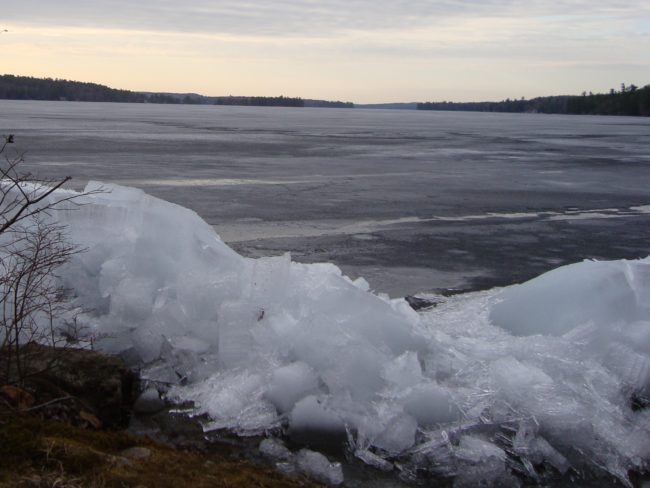Ice-Out 2022! Share your observations!
It’s that time of year again! LEA is collecting dates of ice-out for our area lakes. If you’re a keen lake observer, we could use your help!
Ice-out (or breakup) dates have been collected since the 1800s and have been used as indicators of climate change. That is only part of the story and increasingly scientists are interested in the duration of ice cover on lakes. This is often a better proxy for air temperature trends and can impact lakes by affecting things like water levels, extent of anoxia, and recreational use. Ice cover duration derives from both ice-in (or freeze – you may recall our cry for assistance the past few falls!) and ice-out dates.
Ice-out is defined by the state as when you can navigate unimpeded from one end of the water body to the other, or by the National Snow & Ice Data Center as the date of last breakup observed before the summer open water phase. Unfortunately, not everyone uses the same definition to determine ice-out (
see here). It is best that you use the same method over time, so use your favorite method if you have been doing it a long time. Otherwise, record the date when most of the lake is
navigable (make sure you can observe the whole lake or major basin for large lakes). Some isolated ice remaining in coves or along the shores is OK.
Send your observations to us by filling out our new online form under the “My Lake” tab or click here. Be sure to include your name, lake, date,
how you defined ice-out, and any other notes you want to share (like, loons were here 2 days ago, it’s been wicked cold, what a crazy spring, etc.). There are several organizations that collect ice data from around the state. LEA collects and shares data from our service area with the
Lake Stewards of Maine (formerly VLMP) and (ice-out data) with the
Maine DACF.
Thanks for your help!

